Projects #
Experience #
Please find my updated CV on: LinkedIn
Highlights #
Let me share with you the highlights from the most important projects I was a part of:
2nd Young Engineer's Satellite #
YES2 was educational endeavor of European Space Agency, managed by Delta-Utec, aimed at launching experimental spacecraft capable of deploying >30km long tether an demonstrating novel, propulsion-less deorbitation method. While the mission was only partially-successful, it was great to have this mission as one of first hands-on experiences in satellite design, building, testing and deployment. I was responsible for activities around Stepper Motor Driver, controlling the speed of tether deployment, but, as every one in the project, I also had a chance to look and play with almost every aspect of space technologies. Great way of educating people. Actually, the only reasonable way. It was also unforgettable opportunity to meet colleagues from all over the Europe (World?) and find new friends with whom I stay in touch decades later.
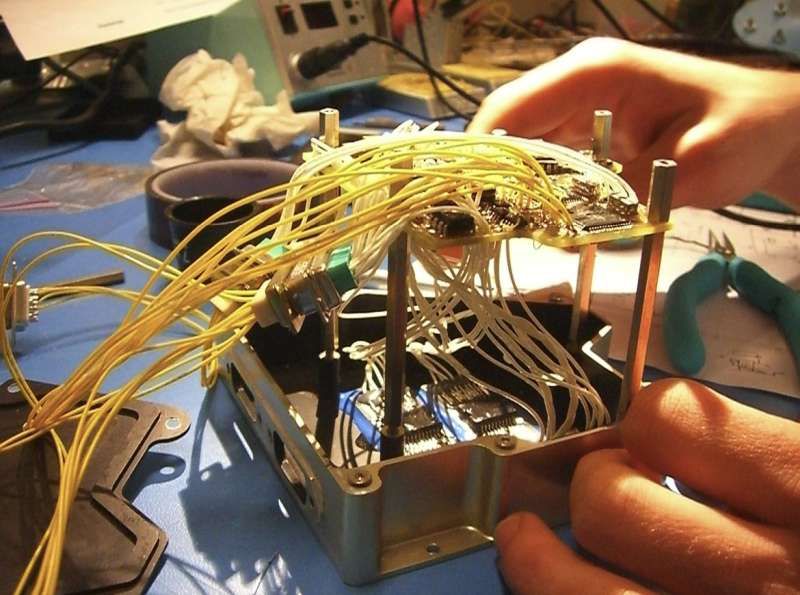
Bit messy at that time, it ended up working as expected.
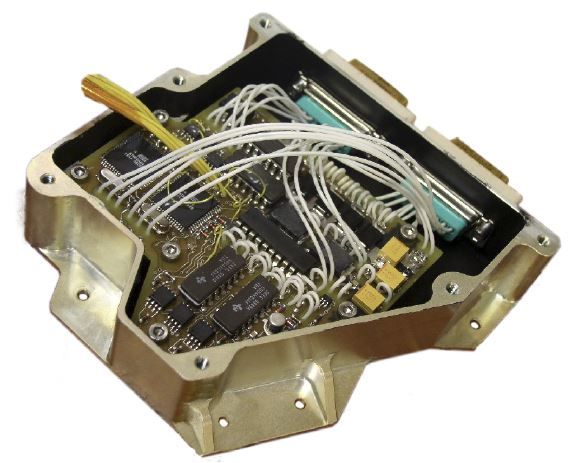
This is how the Stepper Motor Driver looked like, flight ready, before closing the housing.
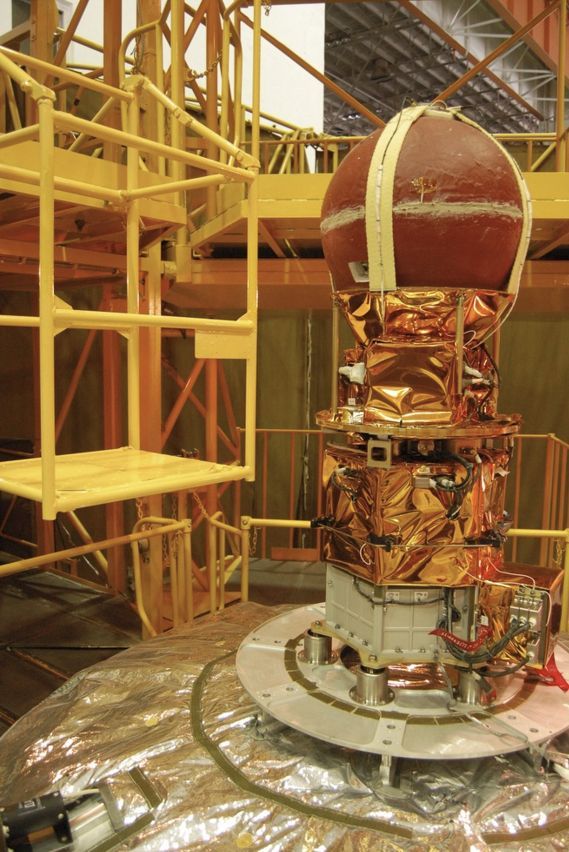
YES2 satellite was not stand-alone it was mounted on another spacecraft, Foton-M3.
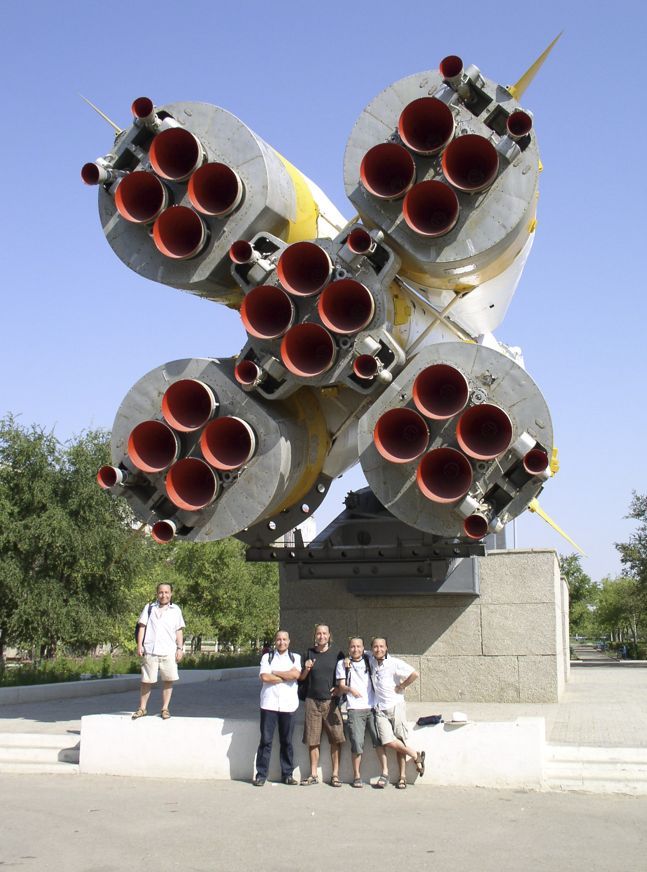
YES2 was launched on Soyuz.
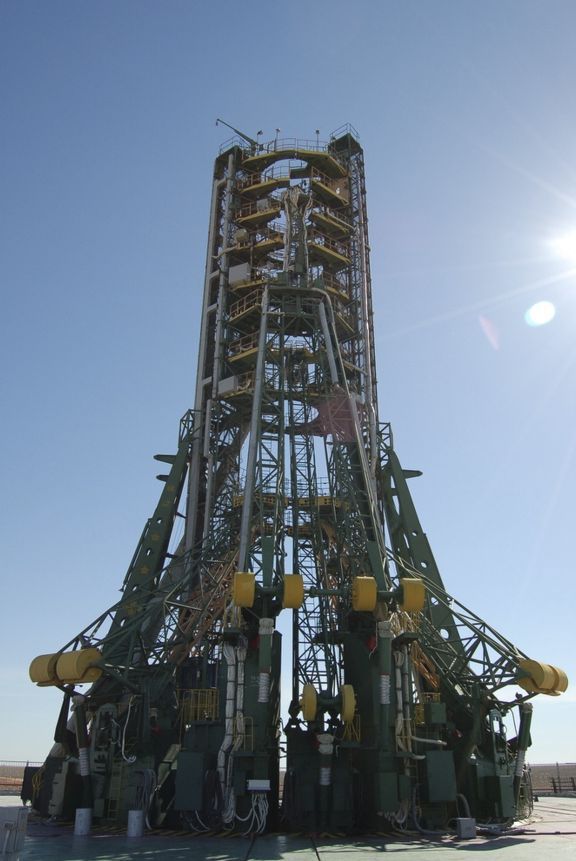
It was launched from this pad.
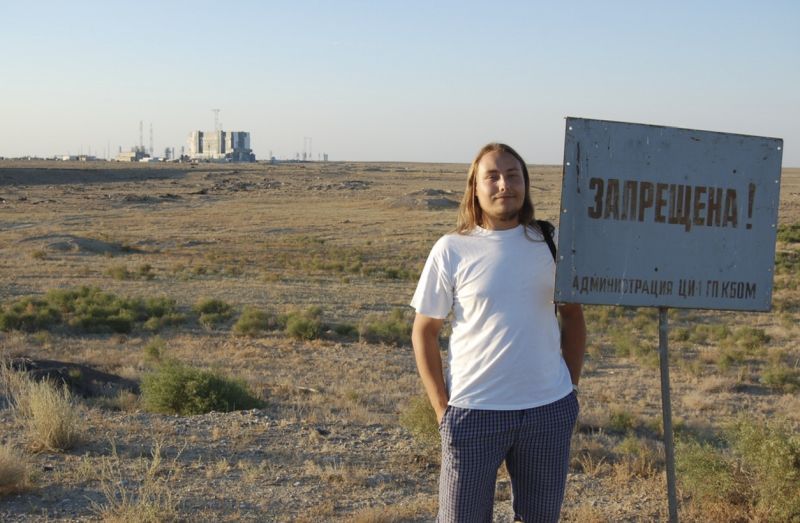
A look on Baikonur spaceport.
SPEKTROP #
SPEKTROP was a research and development project run in CBK PAN in 2009 and later. It touched upon creating hyperspectral imaging system for airborne and spaceborne applications. My responsibility was to design, build and deploy the data processing unit capable of acquiring, processing and storing large data streams (around few GB per second). I consider SPEKTROP as one of my most challenging projects with, definitely, the most complex and performant digital system I have worked on - from scratch up to deployment in target environment (and I learned a lot along the way!).
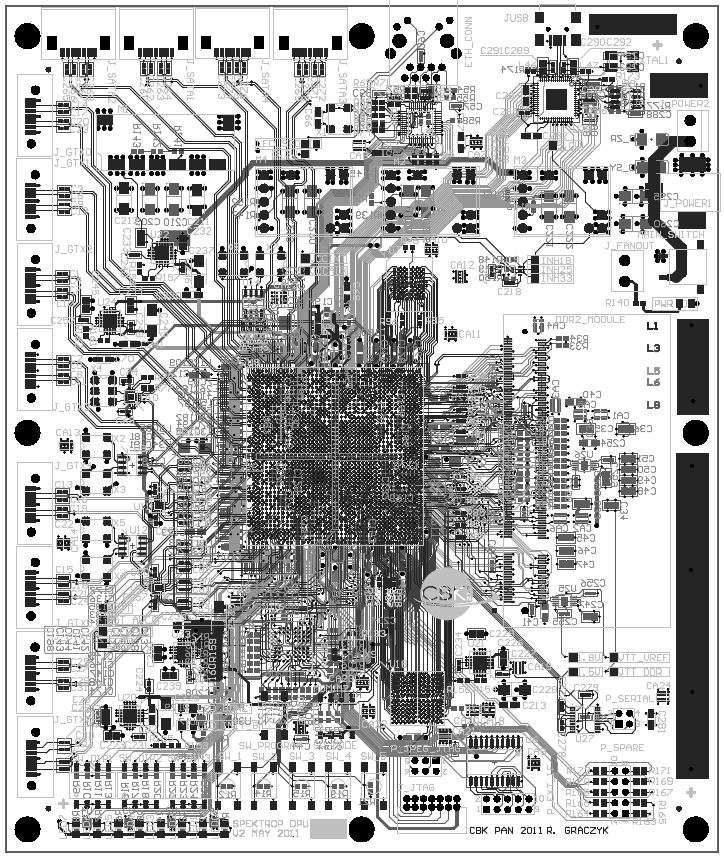
The PCB of SPEKTROP DPU has been custom designed to fit the specific requirements of the project. It was manufactured in one of the institutes that specialize in low-scale, high fidelity, PCB production. Due to design constraints imposed by Xilinx Virtex-5 device, the power distribution and signal routing had to take advantage of 14-layer board.
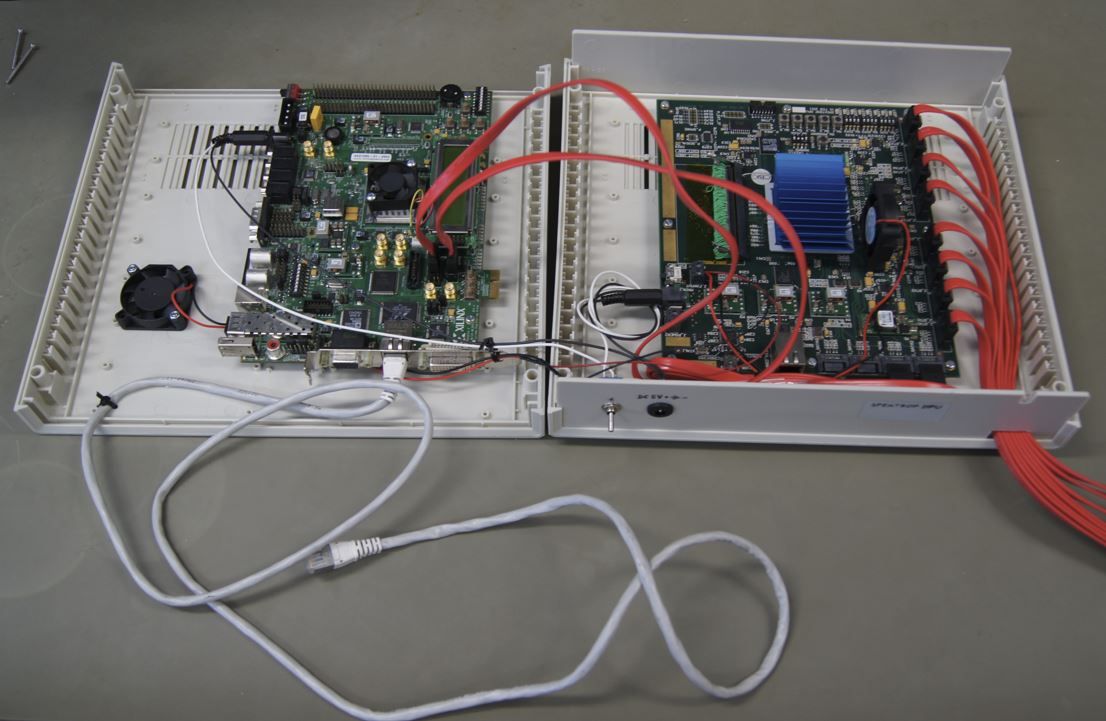
First version iterations were not fully successful. We had to be creative to ensure functionalities required by the rest of the team, so they could progress on their parts as well.
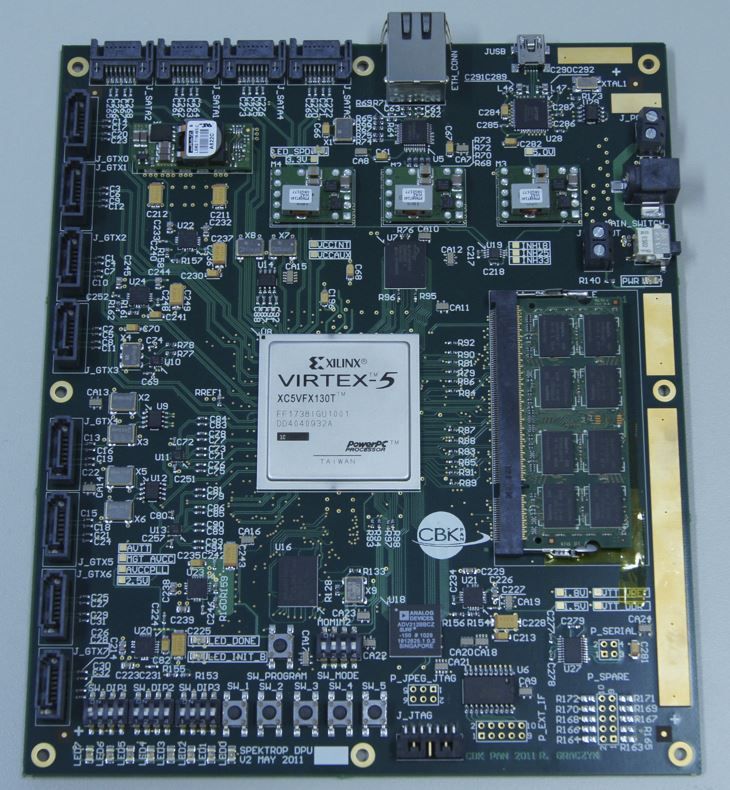
Manufactured, custom made and operational SPEKTROP Data Processing Unit.
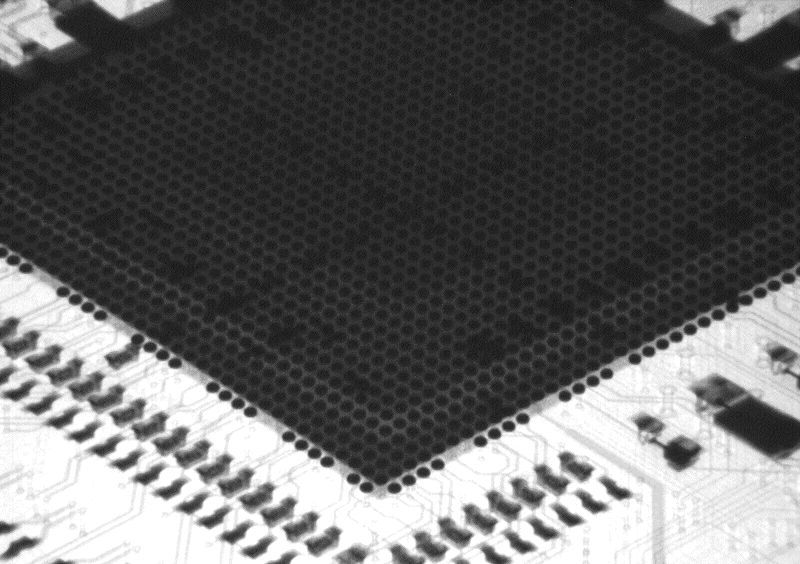
We used advanced techniques to make sure that the quality of manufactured unit is sufficient and standards (as well as, expectations) are met. Here, an image from X-ray inspection of soldered FPGA device.
BRITE-PL #
As the time has shown, BRITE-PL program, that run between 2010 and 2013, was one of most successful space projects in Poland. The whole idea was very simple: to build two satellites out of 6 unit constellation, with clear goal of conducting very specific astronomical observations (observing the variability of bright stars). The project was conducted by the CBK PAN, along with the IKS at TU Graz (2 Austrian units) and the UTIAS SFL (2 Canadian units). The UTIAS SFL brought most of the technology behind the program with being quite open on how things work, how to test them and how to operate them - a real technology transfer use case I would say, and, unfortunately, very rare. From my perspective, it was fantastic opportunity to get hands-on experience in building nanosatellites, almost from scratch, starting with understanding the philosophy of how to design small and efficient space equipment, to building and testing the hardware and the software in relevant environment, to launching and operating the satellites on regular basis. Moreover, I, and my colleagues, could put our own contributions on-board of Heweliusz (the second of Polish BRITEs, the one that followed Lem), namely, some small experiments with custom, in-house, made technologies from CBK PAN: radio bacon, data processing unit, power system and lock & release mechanism.
This is truly an unique experience and I'm very grateful I could be part of that mission.
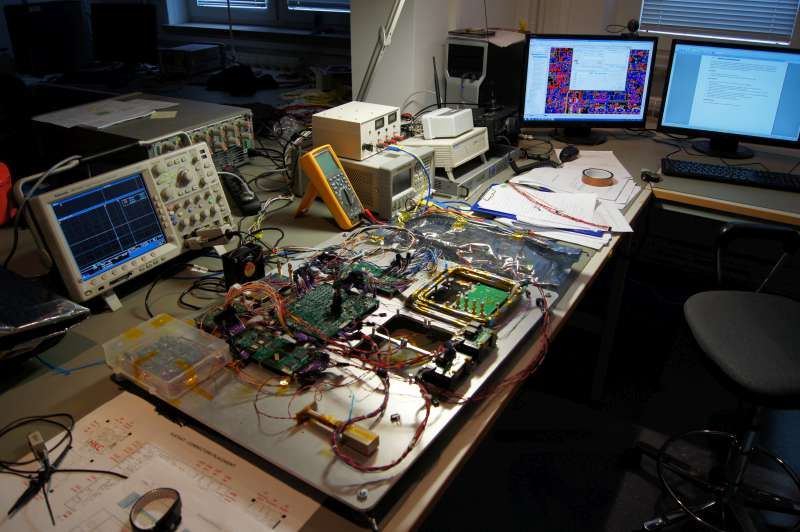
Before actually assembling everything into the sleek satellite, it's good idea to test whole stuff, as much as possible, lying flat on the lab desk. Hence, the flatsat.
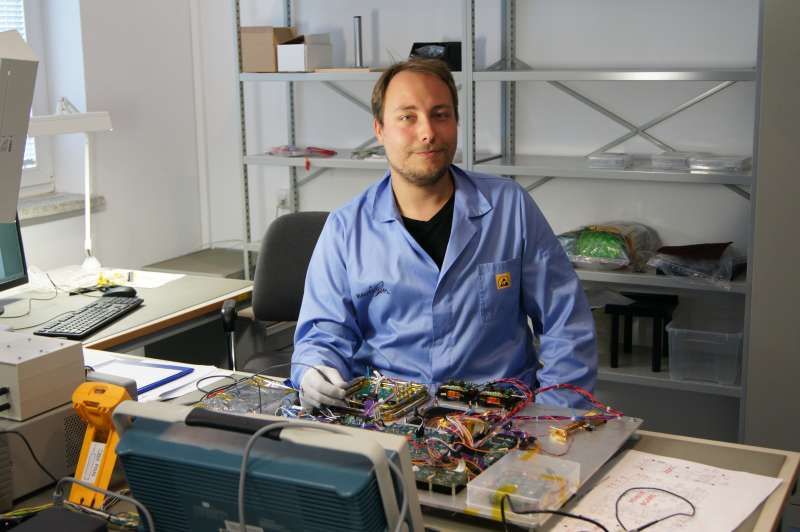
Working by the flatsat, with easy access to whole equipment, is also the last time you can find out about functional issues with the subsystems without need to disassemble whole system.
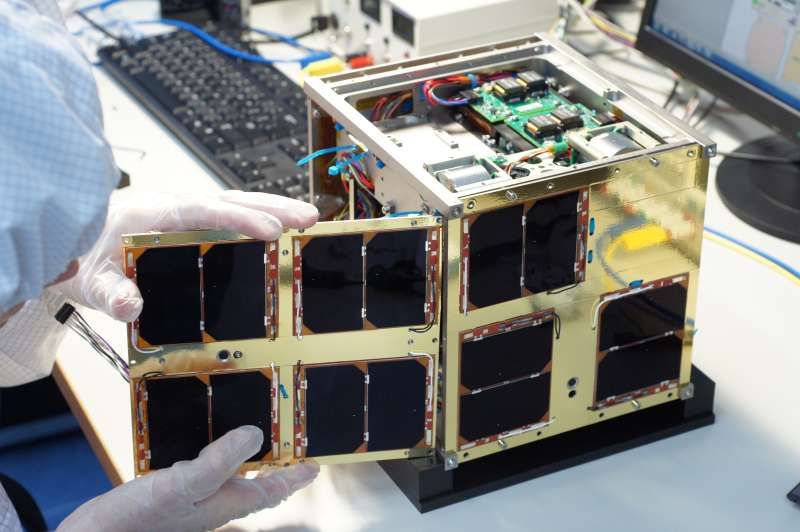
After integrating the subsystems electrically and mechanically, access to satellite internal is much more restricted and from now on, it's operated via communication links (RF and wired, if accessible).
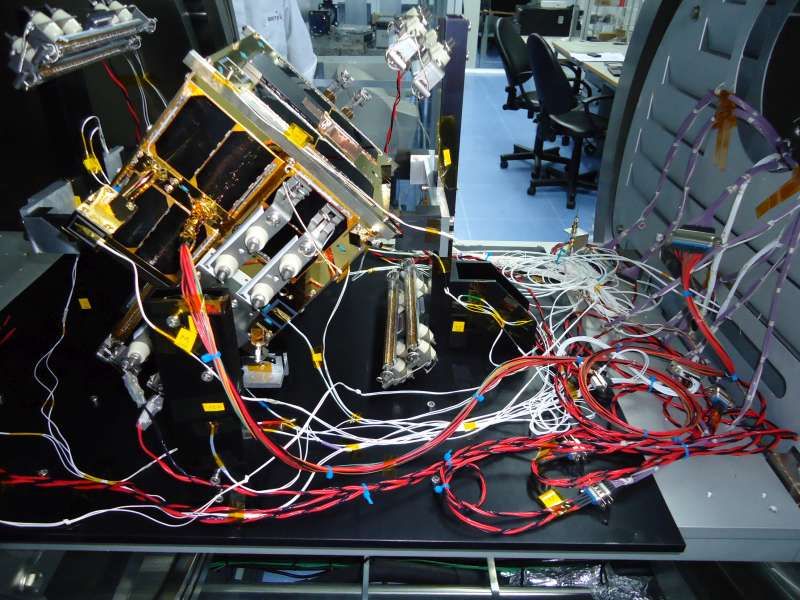
As they say: you test what you fly, and you fly what you tested. The point is to get as much as possible to environmental conditions the satellite will experience when in orbit. Here, on of BRITEs, on the coldplate of thermal-vacuum chamber in CBK PANs cleanroom, surrounded by IR lamps scaffolding.
PROBA-3 CCB #
PROBA-3 is the European Space Agency (ESA) flagship technological mission, aiming at precise formation flying for building a distributed Coronagraph, a Sun's corona observing telescope. The idea is that one of the satellites, an Occulter spacecraft has to position itself between the Sun and the second satellite, the Observer spacecraft, in a way it will block the Sun light, leaving out just the Sun's corona. Again, CBK PAN together with couple of Polish space technology companies, took the challenge and the responsibility of building the Coronagraph Control Box (CCB) - an Instrument Control Unit coupled with power conversion and distribution system. Everything not in NewSpace "let's do whatever we like" approach but much more stringent and demanding ECSS ProtoFlight approach, overseen by the Agency. From 2014 till 2018 I was, both, Project Manager and Systems Engineer for all the activities related to CCB design and manufacturing. 4 years sounds a lot but it actually allowed us to progress from late Phase B (CBK took over the works at "just before Preliminary Design Review" stage) till closing vast majority of RIDs for Critical Design Review, concluding Phase C of the project, when I left for other challenges and the work has been taken over by colleagues from the CBK. The project was quite demanding, both, from technological and organizational perspectives. Technically, we had to convince ESA that our solution will fulfill the requirements, that we will fit into (tight) budget and that expected performance of the system will be met (with sufficient margins). Organizational issues, on the other hand, was the continuous juggling of the agreements and extinguishing fires and ensuring that everyone is up to date, among the Agency, the prime contractor, technical and administrative staff inside the institute and all the subcontractors, external partners or peers in scientific or engineering community who were part of the project. Actually, from perspective of time, the organizational aspect was much more challenging than technical one. It was tough, but in many ways rewarding. My biggest achievement from this project, beside forming and maintaining well playing group of engineering experts was to develop and use some novel modeling techniques that allowed us to estimate the performance and reliability of the system under design, before it even reached prototype stage. On one hand, this modeling allowed us to find design optimizations that lead to significant savings in component costs, on the other hand, it helped us building convincing, evidence-based narration, showing the system is likely to exhibit the desired processing performance and hit the reliability figures. In the end, we managed to correlate the results provided by the modeling with the performance measurements of intermediate models and flight model, essentially showing the full development path - from graph all the way to the electronics systems eventually deployed in space. You can read more about that here.
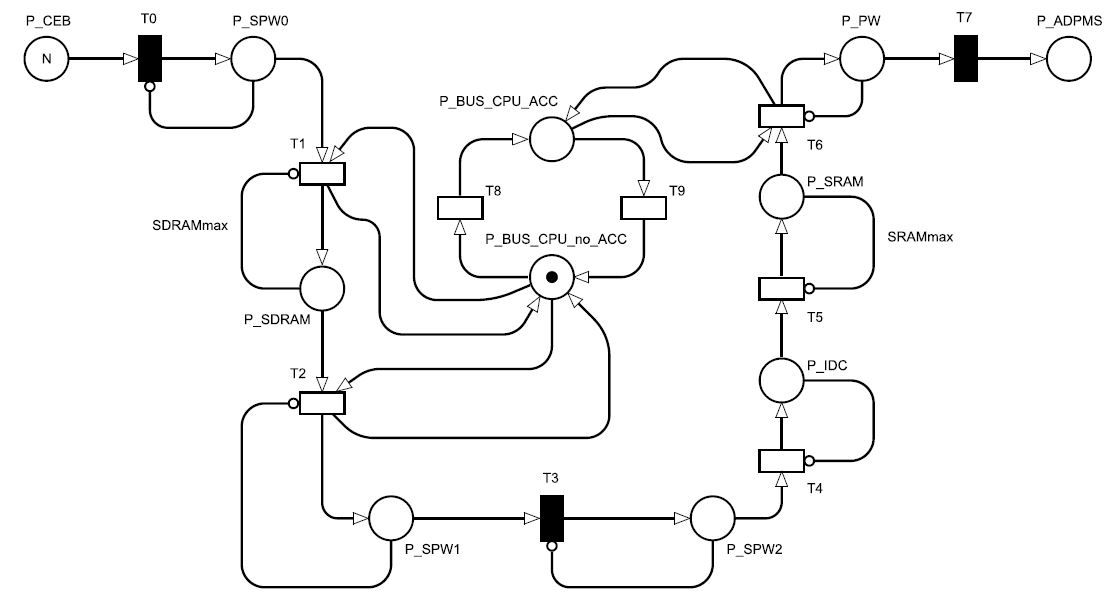
When working with Agency on space project, you better have good evidence in support of your claims, designs and plans. While not everything can be prototyped sufficiently early, a lot of decisions, trade-offs and optimization can be initiated by modeling. Here a pic from PhD thesis on a Petri Net model showing the data flow withing CCB Digital Processing Unit. It was very useful in finding out what is the required size of buffers and whether the performance targets can be met at all.
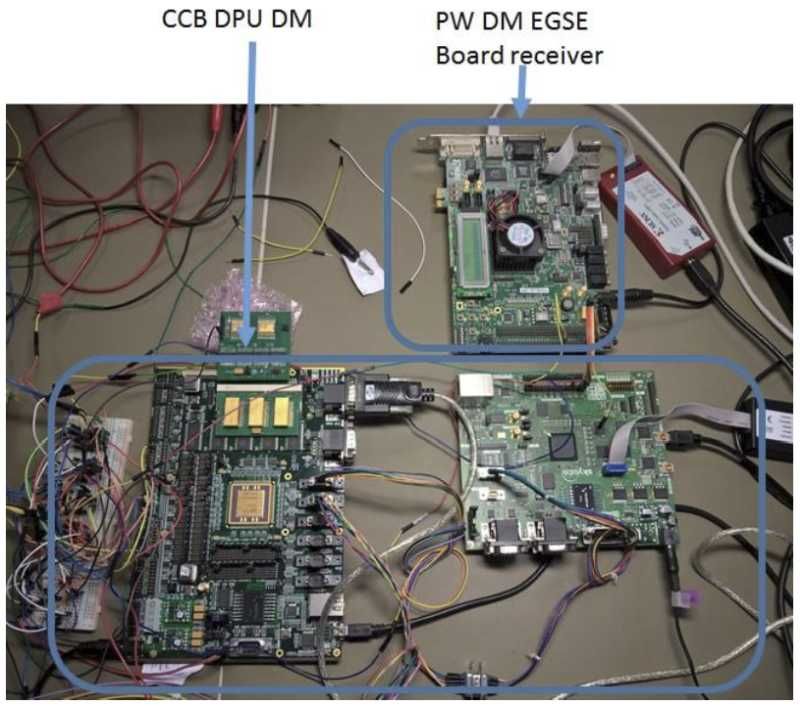
After concluding with modeling and getting the design ready for production, we still had to verify some solutions and to confirm whether the modeling made sense at all. Hence, the Development Model which was built, quick and dirty, to establish basic system functionality and allow for tests and software development.
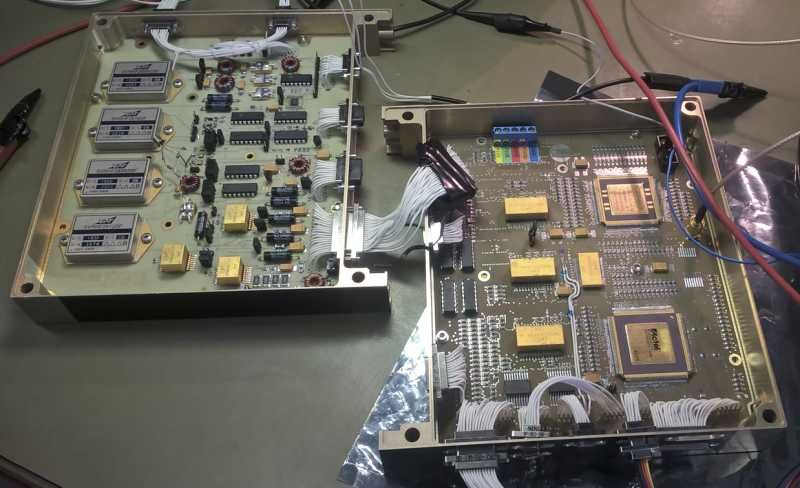
The building of Engineering Model took place after I left the project, but my colleagues, high class experts in the field, managed to continue the development and built the CCB Engineering Model (processing unit and power supply seen on the picture) and followed with the CCB Protoflight Models which will be launched into space in near future.
SHARCS #
After joining CritiX research group in 2019, I had a chance to catch up with the latest research and developments in the field of distributed systems, resilience and fault tolerance. New, wider, computer science backed, perspective on various aspects of dependability allowed me to take another look at couple of problems and challenges often faced in aerospace systems. What was clearly visible, was the gap, in performance, between, state of the art but susceptible to faults processors, and, radiation-hardened, space qualified systems.
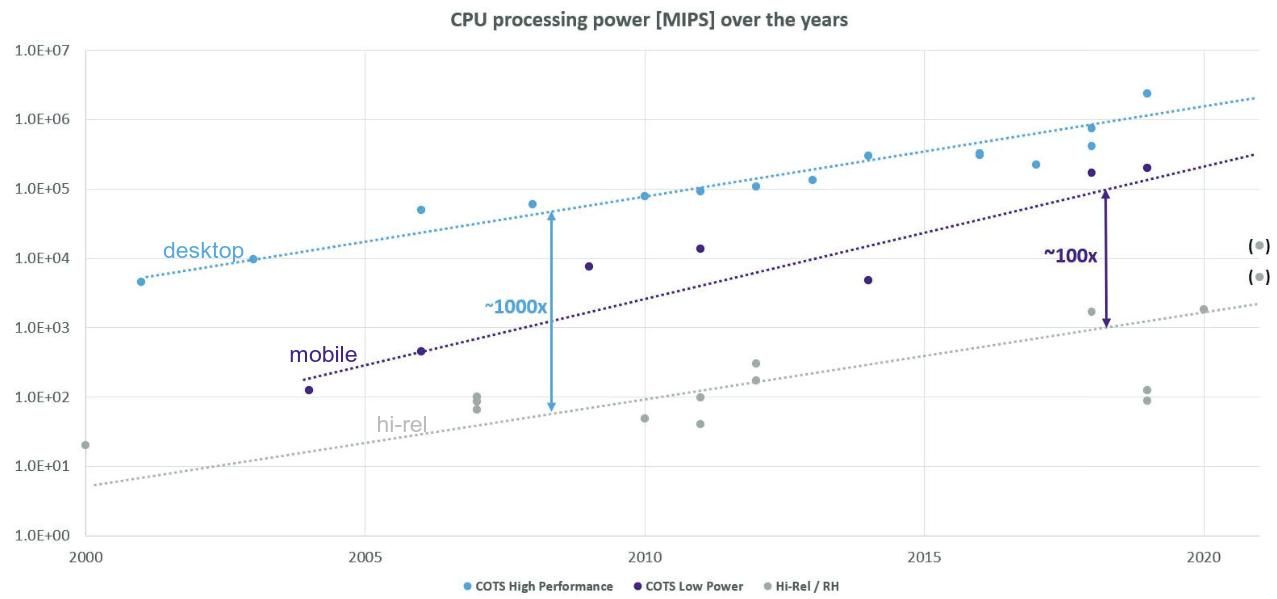
Reliability-performance gap unveiled.
Reliability-performance gap can be considered as a setback for space systems development. At the same time, if those unreliable, but performant components can be utilized in a way that provides some safety guarantees in the presence of faults, this feature would be a huge enabler for space-borne autonomy and large scale data processing. That realization led to some deeper research and sparking ideas of how to combine existing solutions present in data centers, with space based control and data processing systems.
Attempt to bridge the performance-reliability gap resulted in creation of SHARCS (Self-protecting Hybrid ARChitecture) providing some solutions for new and better techniques of fault and intrusion tolerance for space-borne computing (but not limited to use in space, it's just me looking at everything through space exploration lenses).
Again, I couldn't just stay satisfied with theoretical discussion and toy examples and went all they way through prototype implementation steps and experimenting with the embedded processing system in radiation, to as far as setting up a commercialization path for the technology.
While working on experiments on fault tolerance and reliability, we had the opportunity to visit IFJ PAN Institute of Nuclear Physics Polish Academy of Sciences, establish good relationship with fantastic team out there and conduct radiation tests of our solutions, including prototype of the computing cluster. We've learned a lot about the operation of our systems in a proton beam and the high-energy effects they cause.
Commercialization program of SHARCS (via FNR JUMP) was a bit different story - totally new activity and processes, focused around Business Development, customer discovery and customer needs identification leading to creation of market value. Very interesting challenge that I can recommend to anyone willing to ensure their works end up being useful, and worthwhile, beyond the walls of academia.
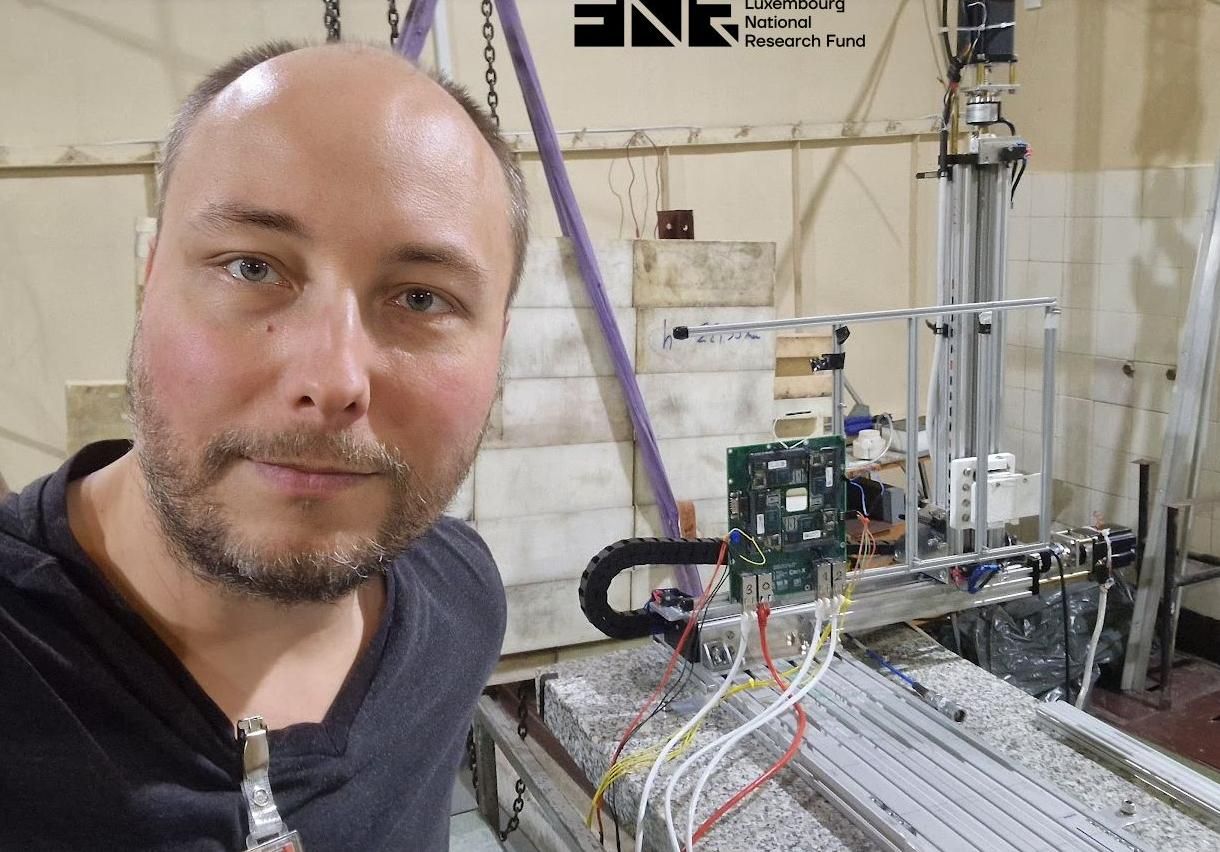
In 2023 and 2024 we've organized, together with IFJ PAN proton tests of, first, candidate modules for cluster processing nodes, then, after we've found out the how those nodes fail, we went further with prototype cluster testing
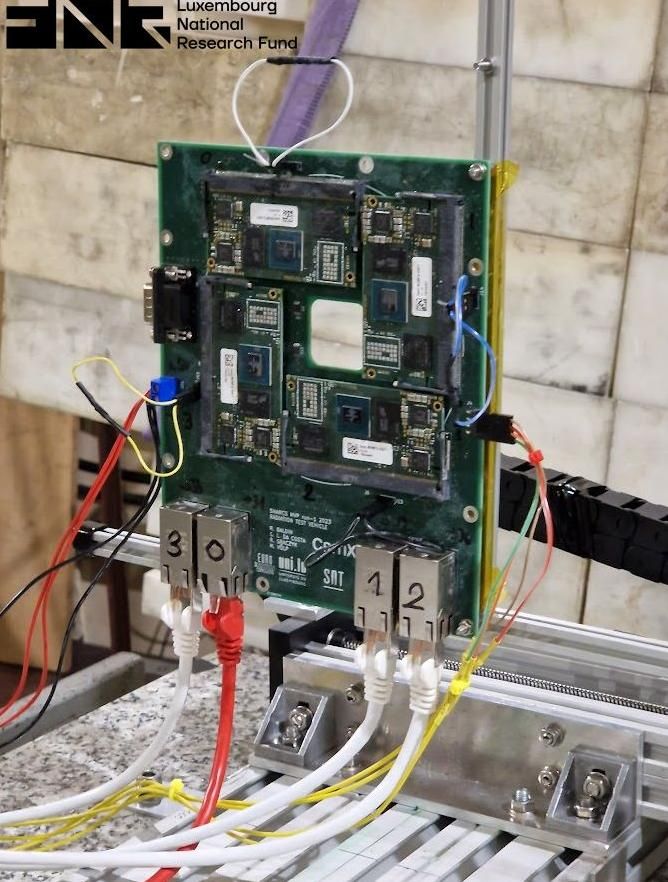
Close up of a cluster prototype before it went into the proton beam.
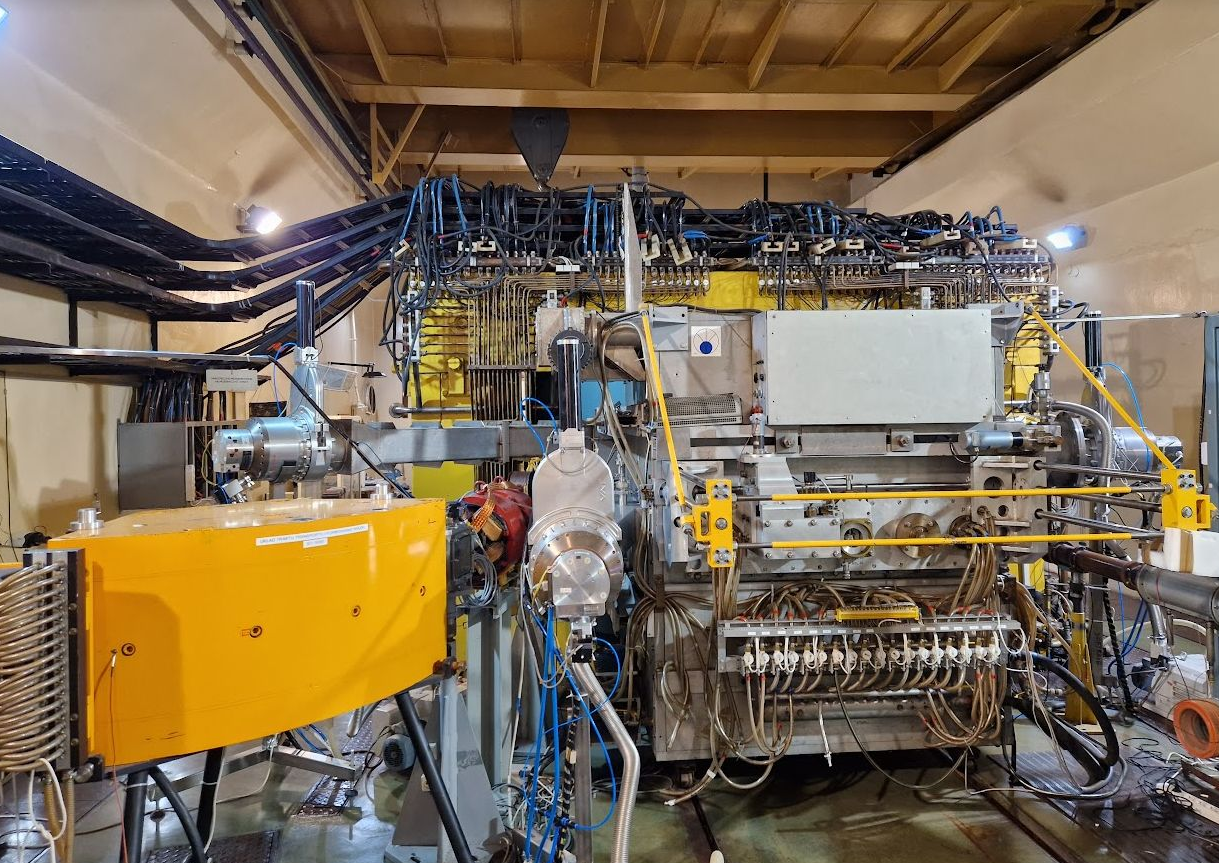
Rare glimpse of the IFJ cyclotron.
SHARCS could not happen without Luxembourg National Research Fund (FNR) generous grant JUMP22-2/17741145. Similarly, this project received funding from the European Union's Horizon Europe Research and Innovation programme under Grant Agreement No 101057511 (EURO-LABS).